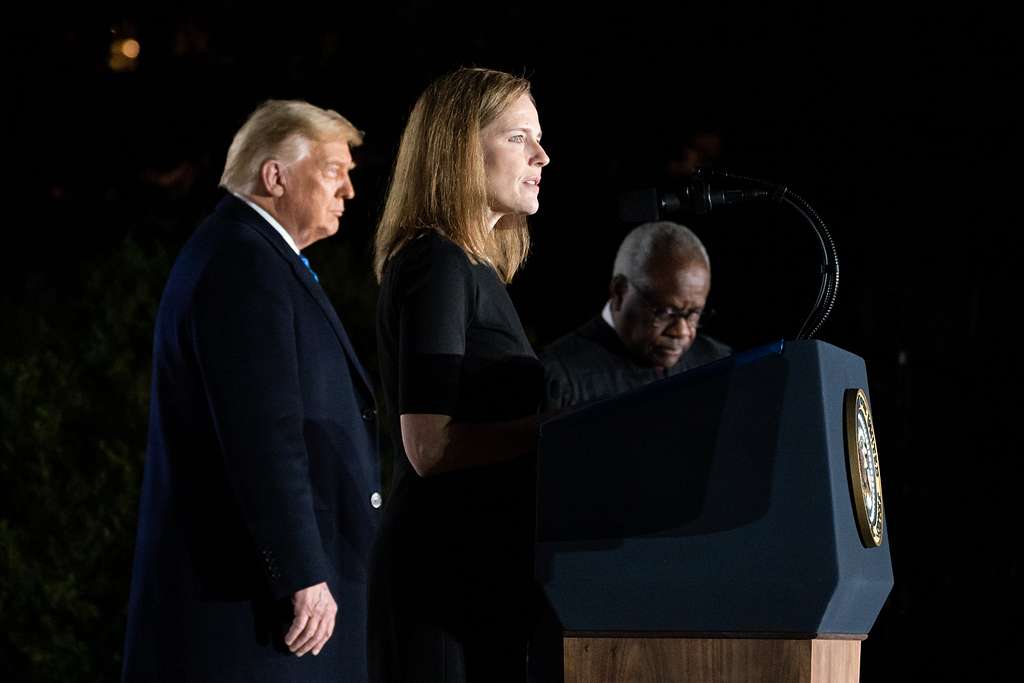Students and faculty were privileged to hear from one of the most important people in our nation’s federal government when U.S. Supreme Court Justice Amy Coney Barrett keynoted the University of Minnesota Law School’s 2023 Stein Lecture on Monday, October 16, in a sold-out event at Northrop Auditorium.
The event featured a question-and-answer format moderated by Law School Professor Robert A. Stein.
Of the 115 justices who have served on the court, six have been women, and only two of those women have been nominated by Republican presidents. Currently, there are four women who are actively serving: Ketanji Brown Jackson, Sonia Sotomayor, Elena Kagan, who all lean left, and Amy Coney Barrett, who is the most conservative of the women.
Professor Stein had some questions for Justice Barrett about her interactions with the other Justices, and what the dynamic of the female Justices outside of the courts. Her answer shows the lighter side of being a Supreme Court Justice, and how there is camaraderie and a fun tradition for the most junior justice and their initiation into the position.
Here is a transcription of the exchange.
Professor Stein: The court now has four women justices serving for the first time in its history. And you perhaps more often align with some of the conservative justices, such as Justices Sotomayor, Kagan, and Jackson. Are there occasions when the four women justices get together for any reason? Possibly to celebrate the fact that there are four now?
Justice Barrett: I am so delighted to have Justice Jackson as my new colleague. My very first dissent, my first term on the court, was in a six-three case, but it was not the six-three you might be expecting when you open the newspaper. It was the six men, and I was writing the dissent for Justice Kagan, Justice Sotomayor, and me.
It is certainly not always the case that women are on different sides. Actually, last term, I think it’s the case that there were only five decisions in which the three other women were in dissent. That’s only five of the 57-or-so cases. There are all kinds of other lineups all the time, and I find myself in a grouping that includes Kagan, Sotomayor and the others. I don’t want to leave the impression that I’m never voting alongside them.
I was very excited when Justice Sotomayor assigned me that dissent and I got to speak for them. I don’t think that my perspective, or that anybody’s perspective is different just by virtue of being a woman because I think we bring to the law our methodological and jurisprudential commitments that are independent of our sex. But I think it is delightful to have the companionship with them on the court.
A tradition on the court was that the formerly most junior justice, who is me, throws a welcome party for the new junior justice, who is Justice Jackson. We did this last January, and it’s just for the justices and their spouses, and retired justices and their spouses. I got to pick her favorite foods, and she picked her favorite entertainment. I did some sleuthing and found out that she loves Hamilton, so I found someone who sings on Broadway who came and sang, and serenaded her with some songs.
It’s really delightful to have people on the court who I consider friends.
—
After this exchange, Professor Stein asked her about her experience being the first Supreme Court Justice with children who are still under the age of 18. You can find a transcript of that Q&A on our website here.






